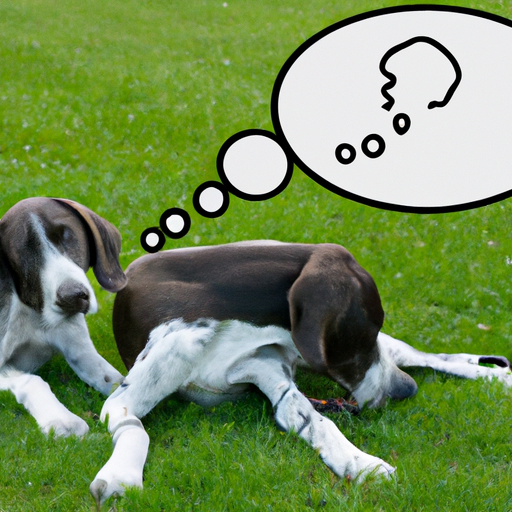As a caregiver to your four-legged friend, you may have noticed an intriguing behavior that leaves you scratching your head: dogs often bite each other’s legs during play or interaction. Understanding why dogs exhibit behaviors like this is essential to ensuring a happy and healthy relationship with your pet.
Table of Contents
- The Basics of Canine Body Language
- Play Biting versus Aggressive Biting
- Why Dogs Bite Each Other’s Legs
- How to Discourage Excessive Biting
- Frequently Asked Questions
Key Takeaways
– Dogs communicate mainly through body language.
– Leg biting is a common part of dog play, but can also indicate aggression.
– Understanding the context of the behavior is crucial.
– Excessive biting can be discouraged through training and socialization.
The Basics of Canine Body Language
The first step in understanding why dogs bite each other’s legs is to understand the basics of canine body language. Dogs have a unique way of communicating with each other, and much of it is through physical cues.
One of the most insightful resources on canine body language is this guide by the American Kennel Club. It reveals that, much like humans, dogs use their bodies to express a range of emotions and intentions, from playfulness to aggression.
When dogs are playing, they may exhibit a variety of behaviors that might seem aggressive if you didn’t know better. These can include growling, baring of teeth, and yes, biting.
Play Biting versus Aggressive Biting
Distinguishing between play biting and aggressive biting is crucial to interpreting your dog’s behavior correctly. Play biting is generally light and inhibited. The dog may nip at the other dog’s legs, tail, or ears, but there is no intention to cause harm.
Aggressive biting, on the other hand, is intended to intimidate or harm. The bites may be harder, focused on sensitive areas, and accompanied by other signs of aggression such as raised hackles, stiff body posture, and intense growling.
Why Dogs Bite Each Other’s Legs
So why do dogs bite each other’s legs? There are several reasons:
-
Play: Dogs often use their mouths in play, much like human children use their hands. They may bite each other’s legs as a way of initiating play or during play as a form of mock combat.
-
Herd Instinct: Many dogs, especially breeds with a strong herding instinct, may bite at the legs of other dogs to try and control their movement. This is a natural behavior that stems from their ancestral roles as herders.
-
Dominance: Sometimes, a dog may bite another dog’s legs to establish dominance. It’s a way for the dog to communicate that they are in control.
It’s important to remember that context is everything. The same behavior can mean different things in different situations. For more insights into dog behavior, check out these articles on dog play, herding breeds, and dominance in dogs.
How to Discourage Excessive Biting
While leg biting is often a normal part of dog behavior, excessive biting can be a problem. It can lead to injuries and create a hostile environment for other dogs. Here are some strategies to discourage excessive biting:
-
Provide Adequate Exercise: Dogs that are well-exercised are less likely to exhibit problem behaviors. Make sure your dog gets plenty of physical and mental stimulation each day.
-
Socialization: Expose your dog to a variety of people, pets, and environments. This helps them learn appropriate behaviors and reduces anxiety.
-
Training: If your dog is persistently biting other dogs, it may be time for some professional training. A good trainer can help you understand why your dog is biting and provide strategies to curb the behavior.
Frequently Asked Questions
1. Is it normal for dogs to bite each other’s legs?
Yes, it’s a common behavior, especially during play. However, if the biting is excessive or causing harm, it may be a sign of a problem.
2. What should I do if my dog is biting other dogs?
If your dog’s biting is causing problems, consider seeking the help of a professional trainer. They can provide you with strategies to manage the behavior.
3. How can I tell if my dog’s biting is playful or aggressive?
Look for other signs of aggression, such as raised hackles, stiff body posture, and intense growling. If you’re unsure, it’s best to consult with a professional.
Understanding your dog’s behavior can greatly enhance your relationship with them. By taking the time to learn about canine communication, you can ensure a positive, healthy environment for your pet.
Remember, every dog is unique and what works for one may not work for another. Stay patient, observant, and open-minded, and don’t hesitate to seek professional help if needed.



